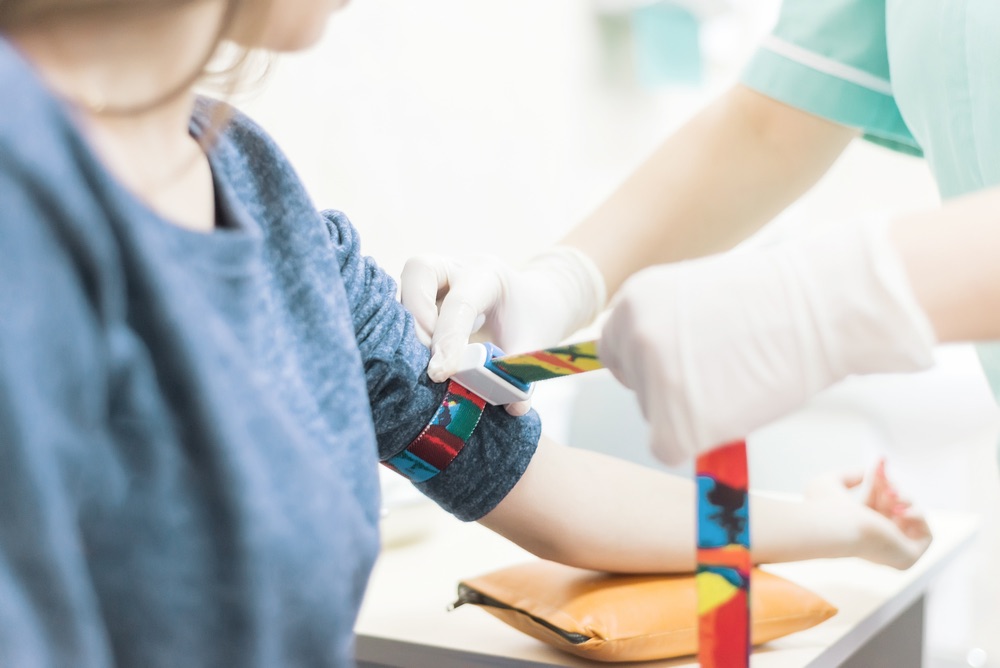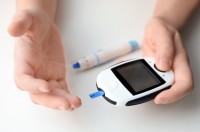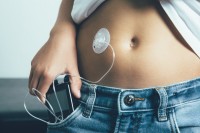

- Home
- Dr Sultan Linjawi
Type 1 Diabetes
Type 2 Diabetes
Prediabetes
Gestational Diabetes
- Diabetes Information
- Testimonials
How is type 1 diabetes diagnosed? What tests are used?

Diagnosing type 1 diabetes is based on symptoms and blood tests.
Type 1 versus type 2 diabetes
It is usually easy to tell what type of diabetes someone has when diagnosing type 1 or type 2 diabetes. However, in some cases it may not be clear if a person has either type 1 or type 2 diabetes so more tests are required.
What are the symptoms of type 1 diabetes?
Most people with type 1 diabetes have symptoms of high blood glucose levels (hyperglycaemia). These symptoms can include:
- excessive thirst
- feeling tired
- frequent urination
- unintentional weight loss
- blurred vision
- increased hunger
- frequent yeast infections or urinary tract infections
- slow healing wounds
Type 1 Diabetes Content |
|---|
| Type 1 Program |
| Overview |
| Risk Factors |
| Symptoms |
| Diagnosis |
| Complications |
| Treatment |
| Diet |
| Monitoring |
| Tools |
| Mental Health |
| Prevention |

How quickly do the symptoms of type 1 diabetes develop?


What blood tests are used to diagnose type 1 diabetes?
When diagnosing type 1 diabetes, a number of tests are used including fasting plasma glucose, random blood glucose, oral glucose tolerance test, and Hb A1c. When testing for diabetes, the first step is to confirm that a person has diabetes and the next step is to differentiate type 1 diabetes mellitus from any other form of diabetes.
Fasting plasma glucose
This test requires a person to fast for over eight hours followed by a blood test. A fasting plasma glucose of greater than 7 mmol/L or 126 mg/dL on more than one occasion can indicate diabetes.
Random blood glucose
A random blood glucose test is taken at any point… it’s random! A reading of 11.0mmol/L or 200mg/dL or more can indicate classic symptoms of hyperglycaemia (high blood glucose levels).
Oral glucose tolerance test
An oral glucose tolerance test (OGTT) involves consuming a sugary glucose syrup followed by a blood test one hour later and another two hours later. A plasma glucose reading of 11.0mmol/L or 200mg/dL or more at the two-hour blood test can indicate diabetes. Most children and adolescents display symptoms of type 1 diabetes, with blood glucose levels well over 11.0mmol/L (200mg/dL), so an OGTT isn’t necessary to diagnose type 1 diabetes.
Haemoglobin A1c (Hb A1c) test
The Hb A1c test looks at the amount of glucose that has bound to a particular type of haemoglobin, the oxygen carrying molecule in our blood. A persons Hb A1c can be a good indicated of average blood glucose control, as it shows the average blood glucose levels over a 2-3 month period. A reading of 6.5% or more can indicate diabetes. However, measured Hb A1c may not be truly reflective of blood glucose control in some people. To learn more about conditions that can contribute to a falsely elevated or lowered Hb A1c reading, visit the Hb A1c test to diagnose diabetes article to learn more.
Type 1 diabetes and diabetic ketoacidosis
Diabetic ketoacidosis (DKA) is a condition that occurs due to a build-up of poisonous chemicals, called ketones, in the bloodstream. DKA occurs in approximately 30% of children who present with type 1 diabetes (Diabetic Ketoacidosis in Infants, Children, and Adolescents). This causes the blood to become acidic, and the combination of acids and dehydration can lead to comas and potentially death.
DKA is a medical emergency and requires immediate medical treatment. Ketones can often be smelt on the breath and has a distinctive ‘nail polish’ smell. Low levels ketones are often normally present in prolonged starvation with or without diabetes.
In a person who has type 1 diabetes, the body isn’t able to use glucose for energy. Instead, stored fat in the body is used as a source of energy. It’s the breakdown of these fatty acids that results in the build-up of ketones, which can also appear in your urine.
Some symptoms of DKA include:
- Moderate to heavy ketones in the urine
- Rapid breathing
- Flushed cheeks
- Abdominal pain
- Sweet acetone (like nail polish remover) smell on the breath
- Vomiting
- Dehydration
What to do if you think you might have type 1 diabetes?
The first thing if you suspect you may have diabetes is to visit your doctor and request a blood test. Your doctor may perform a finger prick test or a more accurate laboratory blood test. There are a number of ways to diagnose diabetes. Once diagnosed it is very important to get educated!! Once you know what is happening and what to do, you can get back to feeling good again.
What should I do next?
If you experience any symptoms of type 1 diabetes or you have risk factors for developing type 1 diabetes, it is important to get tested for as soon as possible. Some people are at higher risk and need regular testing.
By diagnosing and treating the type 1 diabetes early, it means you can decrease the risk of developing or delay any further health complications of type 1 diabetes, for example nerve damage, blindness, and heart disease. It is important to know that diagnosing type 1 diabetes should not rely solely on using a Hb A1c test.
Once you learn what your type 1 diagnosis is, or if you already have type 1 diabetes, the next most important step is to become educated. You can join the 12-week Type 1 Diabetes Program to help you learn how best to manage the condition. For example, you can learn how best to monitor blood glucose levels in type 1 diabetes. The program is personalised and tailored, giving you more of the content that you want. The program also helps you to stay motivated and teaches you what changes you need to make. The first week is free and full of helpful and crucial information.
Interested in more information on type 1 diabetes?
Follow the links below to learn more about type 1 diabetes.









